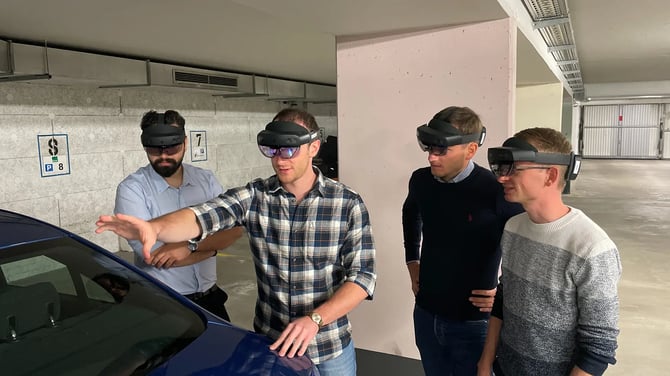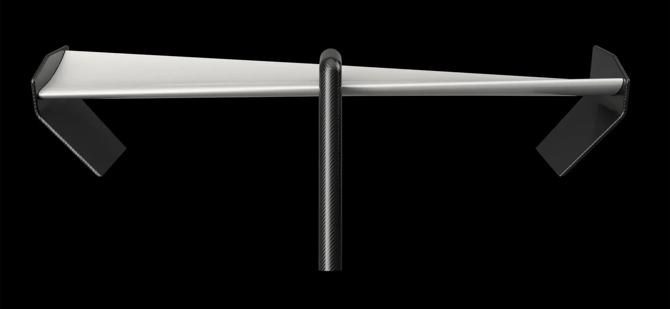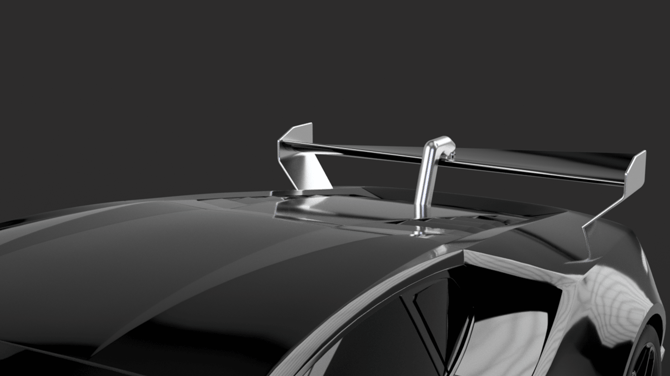Hololight Stream Runtime - XR Streaming out of the box
Until now, streaming XR experiences has largely been the domain of developers - requiring SDK integrations, system configurations, and a fair bit of...
Four students from Munich are developing an adaptive rear wing system for high-performance vehicles. They are using Augmented Reality (AR) to develop the prototype of this innovative component.

Optimal aerodynamics for higher speeds and better cornering. In the automotive industry and in motorsports, a tremendous amount of development goes into making rear wings as efficient and effective as possible. Static, conventional systems offer little potential for improvement in this area. Four young engineers, Andreas Weber, Christian Schlamp, Ali Taghizadegan and Johannes Schuhbauer, have teamed up under the EagleWing project. They want to develop a new type of wing system to improve the driving performance of sports cars.
“Our goal was to develop a rear wing with a noticeable influence on vehicle behavior, which, because of its adaptability, enables the optimum adjustment of downforces in every driving situation,” says Andreas Weber, project manager at EagleWing. A wing generates downforce by its geometric characteristics, the angle of attack and the inflow velocity. The horizontal air resistance (target: minimum) is always in conflict with the vertical downforce (target: maximum).

Static rear wings, however, cannot be adapted to a specific situation. Thus, the task in developing an adaptive component is to utilize this conflict optimally for all driving situations and to model and activate the wing accordingly. The EagleWing system also features a significantly higher number of possible wing configurations and positions compared to conventional rear wings.
“We started on a blank sheet of paper and mainly used common CAD programs to do the design work on the computer and we also performed the initial CFD simulations,” says Johannes Schuhbauer, who is responsible for simulations. “What we were missing was a spatial understanding of the entire module. Also, coordinating a complex CAD model in online conferences, which is usually done virtually because of the COVID-19 situation, was definitely a challenge.”
During their search for solutions, the four students discovered Hololight. “With Hololight Space we have developed an immersive working and collaboration tool for engineers, which has been successfully used in prototype development by global automobile manufacturers such as BMW. But you don’t have to be a large corporation to benefit from Augmented Reality. EagleWing is proof of this,” says Luis Bollinger, CMO and Co-Founder of Hololight.
With Hololight’s Hololight Space AR software, you can visualize 3D CAD data as holograms in a real environment and edit this data collaboratively. The AR solution offers an uncomplicated, fast and, above all, a seamless way to explore complex 3D models in a collaborative space. “In Hololight Space, we were able to view our design in real size for the first time. We were also immediately aware of which components we still needed to adjust,” says design manager Christian Schlamp.
“The ability to overlay our virtual rear wing model with a real vehicle body led to a much better understanding of the component in the vehicle’s periphery than would have been possible on a 2D screen,” adds Ali Taghizadegan, manager of actuator technology at EagleWing. “As a result, we were able to match the components much better with each other in the early design phase.”
The next step for EagleWing is the physical realization and commissioning of a prototype to identify further potential for optimization and to gain new insights and experience about manufacturing and assembly. The students also won a place in the coveted MakerSpace, the prototype workshop of the Technical University of Munich for start-ups and students. Here, Augmented Reality will also help guarantee the most efficient process possible.
“We have different components that use different manufacturing processes, but very limited time and resources,” says Johannes Schuhbauer. “In our case, the individual components have to work during the first test. We can’t afford multiple iterations.” Accordingly, the advantage of being able use AR to visualize model designs in advance is that inconsistent details, easily overlooked design errors or even necessary modifications in the model can be quickly identified and rectified. “Before we take the step into real implementation in the form of a functional prototype, we can check our CAD data in AR to prevent errors,” Ali Taghizadegan explains.
In May of last year, Andreas Weber, Christian Schlamp, Ali Taghizadegan and Johannes Schuhbauer filed a patent application for their adaptive rear wing system. However, for the system to be used in real vehicles, additional development and research is still needed in a number of areas. Once further progress has been made in the development of a model for a specific vehicle, the system will be applied to a test vehicle to demonstrate its effectiveness under real-life conditions.

Initial simulative tests have already demonstrated the effectiveness of the rear wing. At an inflow velocity of 120 km/h and angles of attack ranging from +15 to -10 degrees, an increase in downforce of up to 50% on the simulated inside of the bend and a corresponding reduction in downforce on the outside of the bend were obtained compared with the normal position with a constant angle of attack of 0 degrees. And which sports cars will ultimately be able to go faster with the rear wing? “We have the only independent solution of this kind on the market. The decision is ours,” the inventor group concludes.
For further information:

Until now, streaming XR experiences has largely been the domain of developers - requiring SDK integrations, system configurations, and a fair bit of...

The Fastest, Sharpest, Most Immersive XR Streaming Yet For over a decade, Hololight has been at the forefront of XR Pixel streaming innovation....